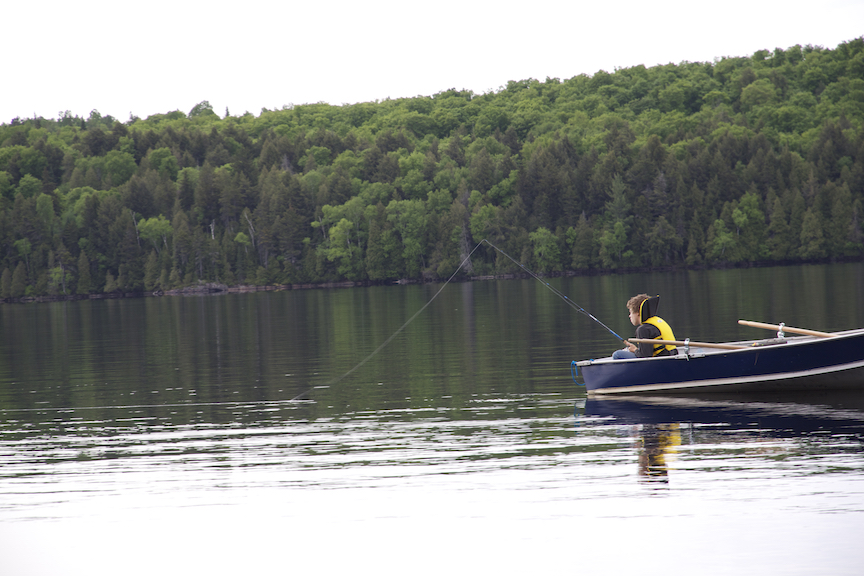McKenzie Lake is a designated Lake Trout Lake
Observed Fish Species
-
- Lake Trout
- Small Mouth Bass
- Yellow Perch
- Walleye
- Smelt
- Pumpkin Seed
- Pike *
1. Lake Trout
Description and Habits: Lake trout are cold water members of the char family. While the colour scheme can vary, the fish usually has a dark grey colour with dappled white spots on a dark background. The tail is deeply forked. These fish grow slowly and do not reach maturity until they reach 6-8 years of age. They spawn over rocky shoals from October to November. The diet of an adult fish consists mostly of smelt, alewife, ciscoe or phytoplancton.
Lake Trout Seasonal Movements
The preferred water temperature for this fish is about 50° F. / 10° C. In the spring (after ice-out) trout can be found in the shallows at 10 feet or more feeding on baitfish. As the water warms, they begin a movement to deeper water. By summer after the water has stratified thermally, adult trout will move to or just below the thermocline to feed on suspended baitfish. As the water cools in the fall, trout make their way towards their spawning areas (Oct./Nov.) over windswept gravelly shorelines and shoals. In the winter after the ice has covered the lake, the water temperature tends to be more uniform throughout the lake and trout can be found in a variety of depths.
Lake Trout Slot Size: A slot size is in effect for lake trout. A kept fish must be either less than 33 cm. (13 inches) or greater than 40 cm. (15.7 inches) in length.
You can only use one line when fishing through the ice.
2. Smallmouth Bass
Description and Habits: Smallmouth bass are cool water members of the sunfish family. This bass is brownish green in colour although it can change somewhat based on habitat features. It has vertical bars on its sides. Unlike the largemouth, the upper jaw does not extend past its eye. Smallmouth bass eat primarily crayfish, baitfish and insects. These fish spawn in 2' to 15' over clean gravel, pebbles or sand.
Seasonal Movements
After the males have finished guarding their nests and the females have recuperated from the spawn, these fish will leave the spawning sites and begin actively feeding. The general movement is away from their spawning areas towards their summer feeding locations. These areas can be shallow or deep depending largely upon the locations of their forage base. Smallies can be found cruising along shallow shorelines, points or deep weed lines. They can graze over the top of or along shoals, reefs, underwater humps and saddles. On occasion they can suspend in deep water iust off of various pieces of structure. Towards the end of the summer, smallmouth start to move towards their fall locations and eventual wintering areas. During this period they put the feed bag so as to survive the dormant winter months. They begin to group up more so than in the summer usually around structure that has access to deeper water.
How Heavy is that Bass?
If you are out on the water without a weigh scale and want to know the approximate weight of the bass you have caught use the following formula: Length × length length divided by 1600.
v1.0

